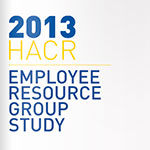On the wall outside Regina Montoya’s bedroom, hangs a painting of Peñasco, a rural New Mexico community. Every morning it reminds her of the sacrifices her family made so she could succeed. For Montoya, it is a graphic representation of one of her favorite philosophies—a metaphor Sir Isaac Newton penned more than three centuries ago: “If I have seen further, it is by standing upon the shoulders of giants.”
When Fred Montoya returned from World War II, he moved away from the northern New Mexico coal town where he was raised and his father went into the coal mines at age 13. With the civil engineering degree he earned under the GI Bill, Fred was able to support his wife’s dream to attend college and become a teacher while they raised their four children in Albuquerque, New Mexico. Together, they impressed upon their daughter Regina and her three brothers the importance of a college education, with the financial means to reinforce it.
The GI Bill allowed her father an education and thus permitted her to believe she could attend any college she wished. She chose Wellesley, where, in 1975, she graduated as one of the only Mexican-American women in her class. She then furthered her education as one of a handful of Latinas at Harvard Law School. Regina credits her law degree to that piece of legislation.
Her legal career began in 1979 with a clerkship for the legendary Judge Sarah T. Hughes, the first female district judge in Texas and an advocate for women’s and human rights. Hughes invoked a mantra that was particularly inspirational for Montoya: “If you don’t do it, someone else will.” Hughes’s passion for standing up for what’s right was a catalyst for motivating Montoya to reach her potential. Montoya also credits her achievements to her mother’s tenacity and commitment to see her children succeed.
“They are the giants on whose shoulders I stood,” she says. “Because of them, I like to remind successful professional Latinos that we have a responsibility to give back, advocate, and be those giants for today’s kids.”
Dauntless in Dallas
Though small in stature, Montoya is a giant in her own right. She was the first Latina in Dallas to earn partnership in a major law firm, Akin Gump Strauss Hauer & Feld LLP, in 1986. Seven years later, she was tapped to serve in the Clinton administration as assistant to the president and director of the Office of Intergovernmental Affairs, making her the highest-ranking Hispanic in the White House. After her tour in Washington, she returned to Dallas and put her experience to work.
If there were any place that could benefit from Montoya’s energy and talent, Dallas would be it. After reports of the city’s poverty made headlines early this year, Dallas mayor Mike Rawlings announced the formation of a poverty task force and asked Montoya to serve as cochair. For Hispanics in particular, the root of the overwhelming poverty is not unemployment but insufficient wages and debilitating expenses. Hispanics make up 38 percent of Dallas’s population, and nearly a third are living in poverty, reported the Dallas Morning News. “My focus on the task force is to level the playing field to allow Hispanics, who are disproportionately affected by poverty, the chance to succeed,” Montoya explains.
For many of these families, a car breaking down or a sick family member can create huge financial issues, such as the inability to pay rent or to even buy food. Though the Affordable Care Act has expanded medical insurance coverage, Latinos are still the most likely group to remain uninsured. Montoya, who has served as general counsel and senior vice president of Children’s Medical Center of Dallas, noted that a third of Dallas’s children under the age of two were not fully immunized. This statistic is particularly staggering in the Hispanic community. Many parents remain unaware or misinformed of the services their children are entitled to while access to physicians is not universal.
Among Hispanics born in the United States to immigrant parents, language is another barrier. “I didn’t speak English as a first language,” says Montoya, “but my parents were able to teach me, and we always had books in the house.” What happens to those families who don’t have the means to provide those opportunities? “As a society we can’t let children fall behind in kindergarten,” Montoya continues. “All children need pre-kindergarten programs and must learn an age-appropriate vocabulary to ensure they have the proper foundation to succeed.”
Challenges rooted in poverty are neither unique to Hispanics nor isolated in Dallas, and they won’t be solved overnight. It will take a multifaceted approach. Montoya believes that Dallas has the resources and manpower to improve poverty rates in a substantial way because she has witnessed the city’s capability in other sectors.
A High-Flying Example
The first flight welcomed on the runways of the Dallas/Fort Worth (DFW) International Airport landed 40 years ago, and each successful takeoff and landing since has been a testament to a great collaboration. The DFW International Airport, one of only seven airports offering service to more than 200 destinations worldwide, has proven that partnership between government, the private sector, and community stakeholders can be mutually fruitful. The airport supports 143,000 jobs and brings in more than $31 billion each year to the area.
That economic potential is what transferred the grand-scale idea from the imaginations of city leaders to the 18,000 fully realized acres the airport occupies today. “The leaders of North Texas recognized that the economic benefits for the entire region were so astronomical, that they committed to making it a priority.”
In 2013, the city of Dallas appointed Montoya to the board of the DFW International Airport. On the board, she contributes to comprehensive policy decisions supporting minority, women-owned, and disadvantaged contractors. These policies help distribute the airport’s economic value among the local community.
Montoya insists that Dallas’s Latino population—and that of the United States— holds a similar value. “It must be recognized that we are the workforce of the twenty-first century and beyond,” says Montoya. “The United States needs the Latino workforce for the economy to reach its potential.”
Barriers to be Broken
The conditions surrounding poverty hinder Hispanics not just in Dallas but on the national level as well. As early as childhood, many Hispanics face a certain set of obstacles on the path to economic security for themselves and their families. Pew Research Center reports:
- The children of Hispanic immigrants are two times more likely to lack the English language skills necessary to excel in school.
- Almost half of young Hispanics say limited English skills deterred them from applying to college.
- Hispanics are the only ethnic group that graduates high school with higher frequency than it attends college.
- 74 percent of 16- to 25-year-old Hispanic survey respondents dropped out of high school or didn’t pursue college because they had to support their family.
- The difference between the average personal earnings of Hispanics and all other US residents is $9,000 less.
- 30 percent of the Hispanic population does not have health insurance.
- 22 percent of Hispanics are qualified to receive food stamps.
SOURCE: Pew Research
Answering the Call
By now, projections of the Hispanic population boom are old headlines, but industry has been slow to respond. Across professions, Latinos are scarce in the fields that offer the kind of jobs that provide what Montoya calls a “middle-class safety net.” She anticipates that filling gaps in science, technology, engineering, math, and legal industries—where Latinos are underrepresented—will take at least a generation. Montoya’s own success story was two generations in the making. Even so, the foundation can be laid today if leaders are willing to take action at all levels.
Governmental intervention is one element of the solution. Though politics can often complicate the process, she cites the effectiveness of investments such as the GI Bill to create social mobility for entire families. For Hispanics today to reap the benefits of a post-secondary education, they must be adequately prepared from pre-kindergarten, an imperative Montoya is working to keep high on the nation’s priority list.
One of the various boards she serves on is the Mexican American Legal Defense Fund (MALDEF). In 2010, MALDEF, together with the National Education Association, published a report that focused on best practices and provided policy recommendations for improving student achievement and closing the public education achievement gap. The report focused on partnerships between parents and schools, a key effort backed by Montoya that improves student achievement and ensures that the option of a college education exists for Latino children. “We must also look beyond government to create educational opportunities for our children,” says Montoya. “We have to create partnerships with parents, schools, Latino leaders, and with corporate America to ensure kids have an adequate foundation to graduate from the college of their choice and achieve the American Dream.”
When she speaks to Hispanic students in Dallas, Montoya can relate to many of the obstacles they face in “dreaming big dreams.” One advantage she had that many of these kids do not, however, is a simple idea: possibility. Her mother was such an important adviser because she made clear that college and a profession in the legal field were possibilities for her daughter. Montoya wants parents to believe in these possibilities for their children, too. “I want these kids to dream big, audacious dreams,” she says. Still, she doesn’t deny that major obstacles exist for many families. “As Latino professionals, we need to make ourselves visible as advocates and break down those barriers,” she says. No matter the sector—private, government, or nonprofit—Montoya has dedicated her career to elevating and empowering those often overlooked. The Hispanic National Bar Association named her Latina Lawyer of the Year in 2007. The association’s Dallas branch recognized her with the La Luz award for promoting the legal profession and education. In her tenure at Children’s Medical Center of Dallas, the Dallas Business Journal named her one of the top 25 industry leaders in 2010.
The story of Regina Montoya’s rise to professional accomplishment is a case study of Hispanic success in America. But until paths like hers become highways traveled by many Hispanics instead of just a promising few, they will remain anomalies. “We finally have to say, ‘Our Latino children deserve better and deserve the opportunity to dream,’” says Montoya. Anything less leads down a path that Dallas, Texas, and the United States as a whole, can no longer afford to travel.

